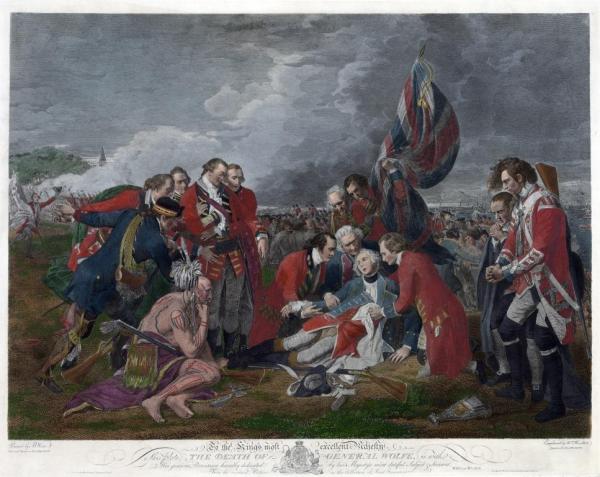Empire and Identity in the American Colonies

The Death of General Wolfe by Benjamin West, 1770, engraved by William Woollett
Library of Congress

The Death of General Wolfe by Benjamin West, 1770, engraved by William Woollett
Library of Congress
By the mid-18th century, British colonial settlements on the east coast of North America had become part of a vast colonial empire, abutting other European empires and territories occupied by numerous Native American tribes and confederations. The British had developed their empire for political and economic purposes over the previous century, seeking to protect the colonies from European rivals and profit from their colonies’ products and commerce. Around 1750 many nations and peoples were engaged in a contest for North America – and some of these competing parties came together at the Albany Conference that took place in June and July of 1754 under British auspices.
In this lesson students will examine the various visions of three active agents in the creation and management of Great Britain’s empire in North America – British colonial leaders and administrators, North American British colonists, and Native Americans. Students will assess the identities and relationships of these groups in the context of the Albany Conference of 1754, where they came together at the behest of British officials seeking greater colonial unity in anticipation of a war with France for North American territory.
An EDSITEment lesson for students, teachers, and life long learners. http://edsitement.neh.gov/lesson-plan/empire-and-identity-american-colonies